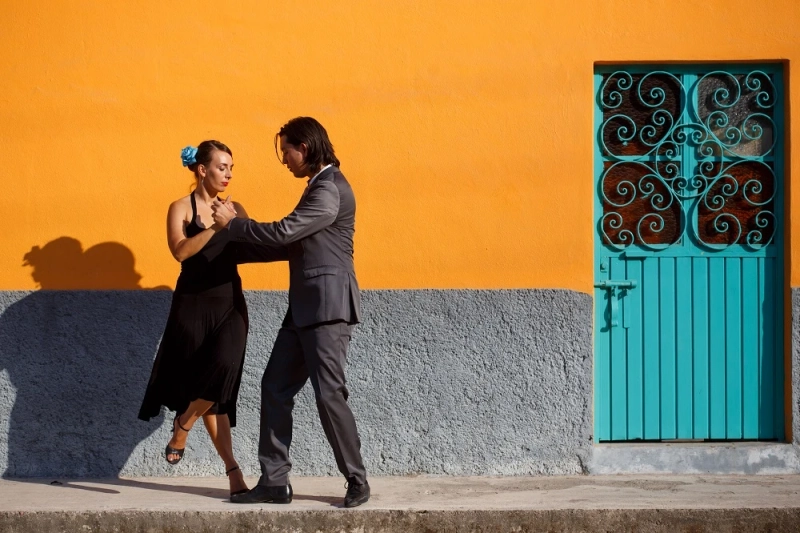Salsa has been a staple in Cuban music and dance for over a century, and its roots can be traced back to the late 19th century in Havana. Over time, the genre has evolved and blended with other musical styles to become the dynamic and energetic form of salsa that is enjoyed all over the world today.
This guide will take you on a journey through the history and evolution of Havana Salsa, exploring its roots, and how it has become the beloved dance form it is today. Whether you are a seasoned salsa dancer or a newcomer to the scene, this comprehensive guide will give you a deeper understanding and appreciation for the rich cultural heritage of Havana Salsa.
What is Havana salsa and where did it come from?
Havana Salsa is a style of salsa dance that originated in Cuba in the late 19th century. It is characterized by its energetic and lively rhythms, intricate footwork, and playful partner interactions. Havana Salsa evolved from various Cuban musical genres, including Son, Cha-Cha-Cha, and Rumba, and was popularized in Havana's dance clubs, or casinos, during the mid-20th century. Havana Salsa spread to other parts of the world as Cuban musicians and dancers emigrated, and today it is a beloved dance form enjoyed by people of all ages and cultures.
How has Havana salsa evolved over the years, and what are some of its defining characteristics?
Havana Salsa has evolved over the years by incorporating elements from other musical styles and dance forms. As Cuban music and dance have been influenced by other Latin American and African rhythms, Havana Salsa has incorporated these elements into its sound and style.
Some defining characteristics of Havana Salsa include its emphasis on rhythm and musicality, fast-paced footwork, and playful partner interactions. The dance is characterized by its use of quick turns, tight spins, and dynamic body movements that emphasize the rhythm of the music. Havana Salsa is also known for its use of a "lead and follow" technique, where the leader guides the follower through the dance using subtle body movements and gestures.
As Havana Salsa has spread around the world, different countries have put their own unique spin on the dance form, resulting in various regional styles. However, the core principles of rhythm, footwork, and partner interaction remain the same, making Havana Salsa a universally recognizable and beloved dance form.
Which is the best place to learn salsa in Havana?
Dancing salsa in Havana is an experience like no other! The combination of vibrant music, passionate dancing moves, and a fantastic atmosphere will make you want to stay there forever.
If you’re looking for the best place to learn and dance Havana salsa, then the answer is Latinsalseando. This renowned school offers classes for both beginner and advanced dancers. Led by some of the most talented instructors in Cuba, they provide a wide range of courses that focus on different styles including Rumba, Son Montuno, and Cha-cha-chá.
How can you get started learning Havana salsa if you're not in Cuba or don't live near a dance school or club that teaches it?"
If you are interested in learning Havana Salsa and don't live near a dance school or club that teaches it, there are several options available to you:
Online lessons: There are many online resources available that offer lessons in Havana Salsa. From videos to virtual classes, you can find a wealth of instructional materials online to get started.DVD lessons: DVD lessons are another great way to learn Havana Salsa from the comfort of your own home. Look for a DVD that is taught by an experienced instructor and covers the basics of the dance form.Books: If you prefer to learn from a book, there are several instructional books available that focus on Havana Salsa. Look for a book that includes detailed instructions and illustrations to help you understand the steps and movements.Join a virtual community: Joining a virtual community of salsa dancers, such as a Facebook group or forum, can be a great way to connect with other people who are interested in learning the dance. You can share tips, ask questions, and get feedback from other dancers.Final Thoughts
Havana Salsa has a rich and fascinating history, rooted in the musical and dance traditions of Cuba. Over the years, it has evolved and incorporated elements from other styles, resulting in the dynamic and energetic dance form that is enjoyed by people all over the world today. Whether you are a seasoned salsa dancer or just starting out, understanding the history and evolution of Havana Salsa can deepen your appreciation for this beloved dance form. As you continue to learn and grow as a dancer, keep in mind the rich cultural heritage that has shaped this amazing dance, and never stop dancing!



